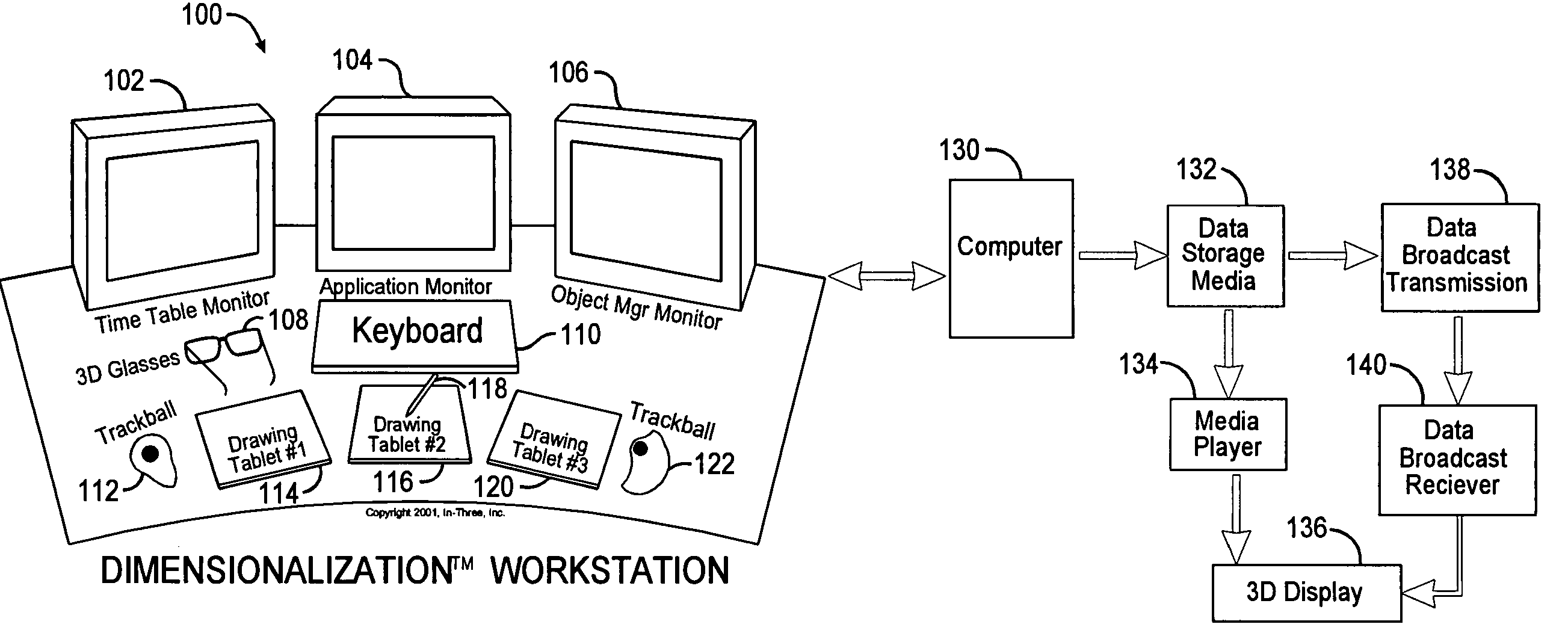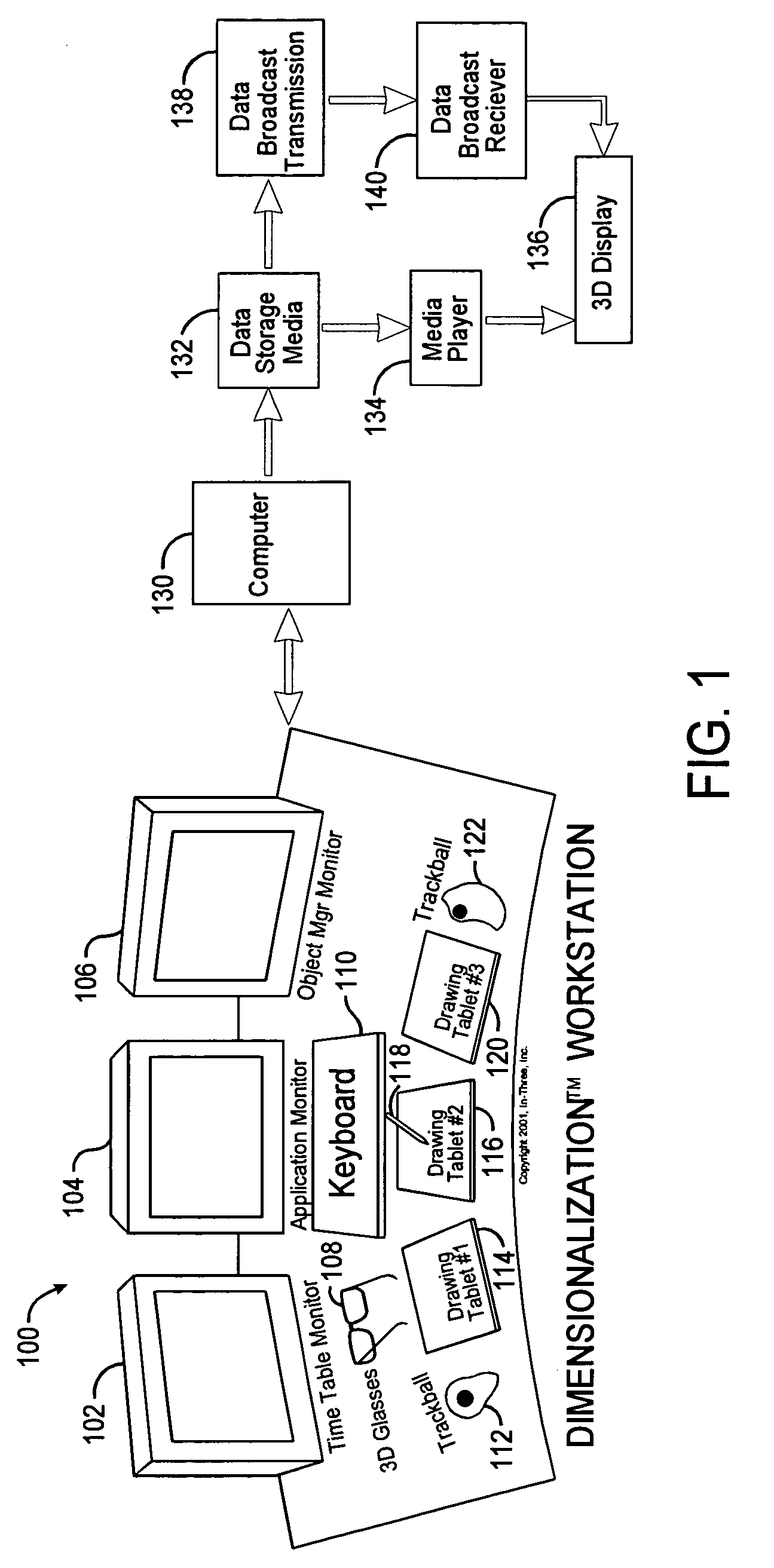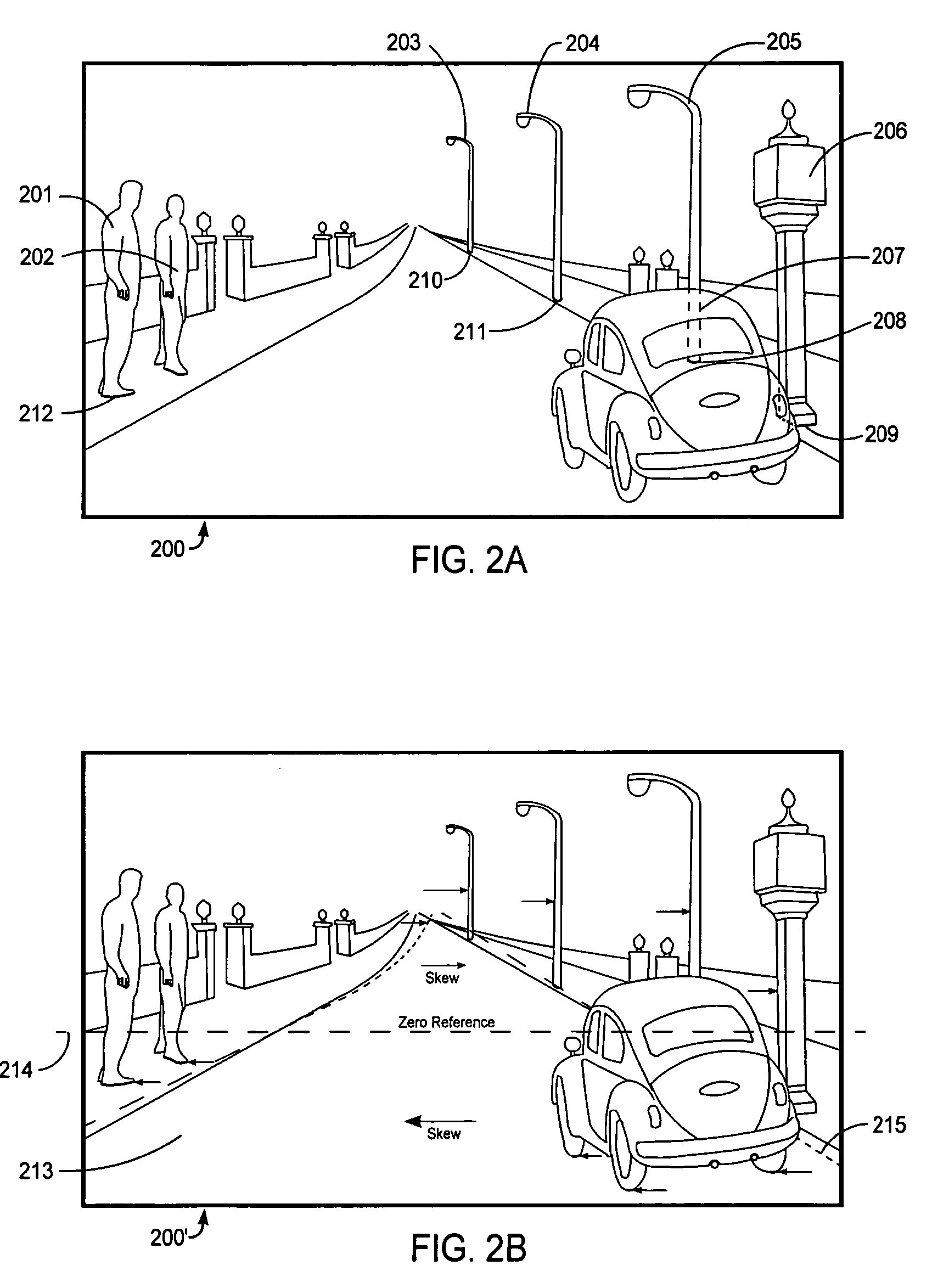Method for conforming objects to a common depth perspective for converting two-dimensional images into three-dimensional images
a technology of depth perspective and object, applied in the direction of image analysis, geometric image transformation, instruments, etc., can solve the problems of time-consuming and unpractical use of the process
- Summary
- Abstract
- Description
- Claims
- Application Information
AI Technical Summary
Benefits of technology
Problems solved by technology
Method used
Image
Examples
Embodiment Construction
[0062] Referring to FIG. 1, a workstation 100 according to the present invention includes one or more video monitors which provide a user of the DIMENSIONALIZATION™ process with an interactive interface through which a plurality of original images can be duplicated and rendered into three-dimensional images. More specifically, the interactive interface embodies a plurality of tools particularly adapted to facilitate rendering of three-dimensional complementary images such that each resulting complementary image and its corresponding original image provide a stereo pair of images for a three-dimensional image. It should be noted however that the scope of the present invention additionally includes creating or rendering multiple frames, rather than a single frame.
[0063] The exemplary workstation 100 shown in FIG. 1 includes a time table monitor 102, an application monitor 104, an object manager monitor 106, three-dimensional glasses 108 and one or more user input mechanisms such as a...
PUM
 Login to View More
Login to View More Abstract
Description
Claims
Application Information
 Login to View More
Login to View More - R&D
- Intellectual Property
- Life Sciences
- Materials
- Tech Scout
- Unparalleled Data Quality
- Higher Quality Content
- 60% Fewer Hallucinations
Browse by: Latest US Patents, China's latest patents, Technical Efficacy Thesaurus, Application Domain, Technology Topic, Popular Technical Reports.
© 2025 PatSnap. All rights reserved.Legal|Privacy policy|Modern Slavery Act Transparency Statement|Sitemap|About US| Contact US: help@patsnap.com



